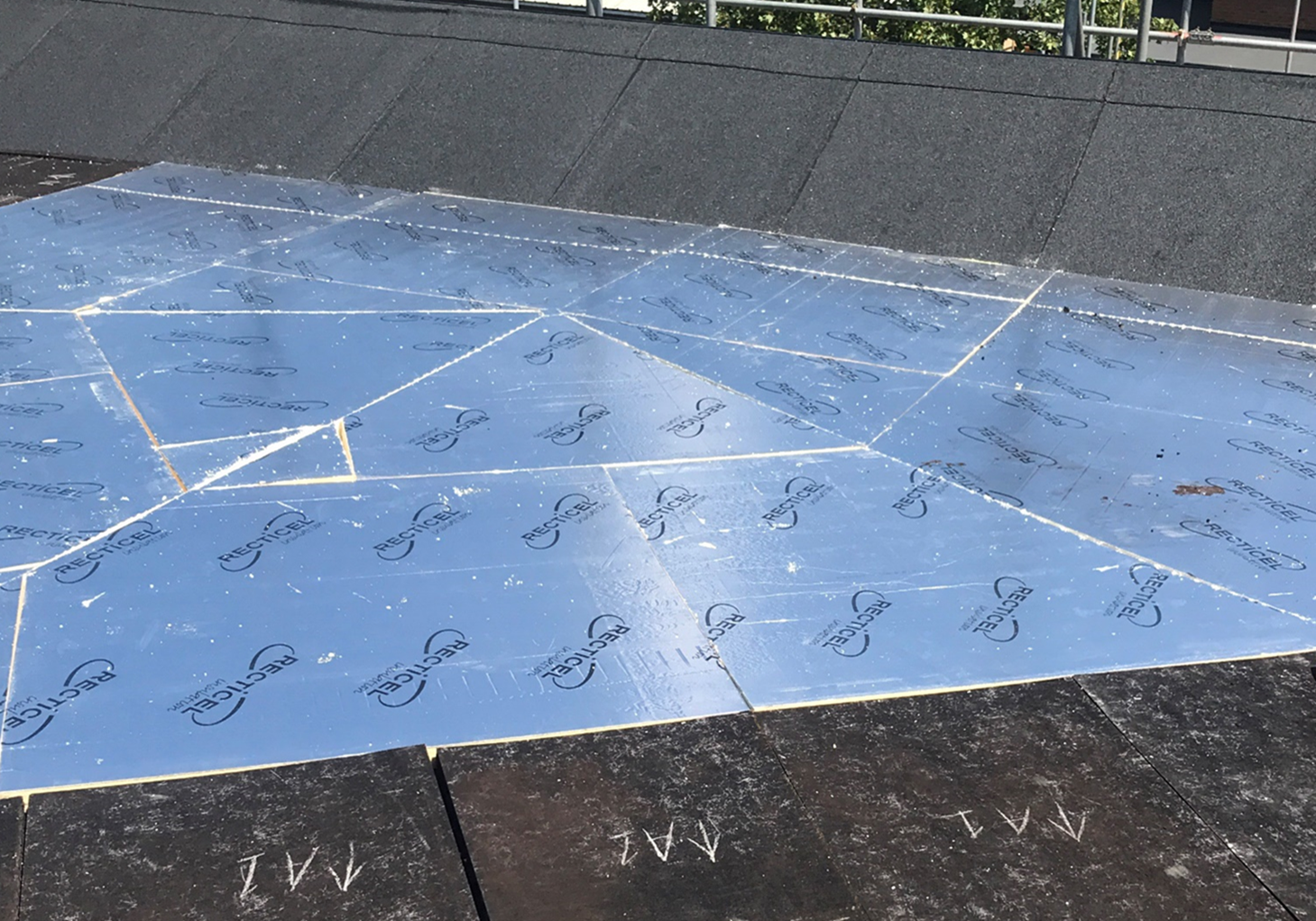WHY IS A FLAT ROOF CRICKET RECOMMENDED FOR CHIMNEYS AND FLAT ROOFS?

Roofing crickets are an effective compromise to a full tapered scheme and ensuring roofs remain pond-free. But how and where are they best installed?
What are flat roof crickets and where to place them?
A roofing cricket is a V-shaped tapered accessory which is installed at details such as rooflights, chimneys, between outlets and corners where water has a predilection to collect and cause ponding. A flat roof cricket helps disperse water which might otherwise weigh heavy on a roof and cause damage overtime. Stagnant water carries a particular risk during winter, as plunging temperatures could cause it to freeze and pose more of an immediate threat to a roof’s surface and the underlying structure. Ponding water also provides ideal conditions for pests and bugs to breed, particularly mosquitoes.
A cost and time-effective solution, roofing crickets are typically installed on flat roof projects where the existing deck is laid-to-falls. They are seen as an effective compromise when a tapered roof or gutter system is not deemed viable. Crickets are available in quarter, half and full sizes. Full crickets are diamond-shaped and are used to direct water to outlets on a roof that slopes in two directions. Half crickets are ideal for directing water flow around obstructive details such as rooflights, whilst the quarter option is often used as a corner piece to eliminate ponding issues.
Roof crickets can ensure effective roof drainage
Typically PIR-based, roofing crickets can be manufactured to suit a wide range of applications such as bonded, torch-on and built-up felt systems etc. In terms of their size, this depends on the roof’s existing fall. Gradient can stagger the depth of a cricket in order to obtain the best fall along the angle. Failure to achieve this could result in rainwater collecting at the cricket face rather than be redirected.
Specification is key to a flat roof cricket performing the task it was designed for. Prior to installation there are two important issues to consider. Firstly, is the cricket’s material composition compatible with the roof’s waterproofing system? Furthermore, is there enough fall on the existing roof? Gradient’s technical team can provide the answer to both questions. As part of our bespoke design and manufacture service, our surveyors are able to undertake site visits to measure a roof’s existing falls and decide whether a cricket system or a more robust full tapered scheme is required.
With regards to installation, roofing crickets are able to be adhered straight-to-deck or to the existing PIR system. If the roofing crickets are being retrofit to an existing roof, care should be taken to prime the existing waterproofing layer before installing the cricket system. A suitable adhesive should be used to bond a cricket to the substrate, which should be given space to breathe to prevent damp formation.
A secondary application they might be but if designed and installed correctly, roofing crickets can effectively extend a roof’s lifespan. They are a cost-effective solution to a common roofing problem.






